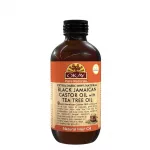Women live longer than men on average. Not sure why? Let’s cut through the fluff and break down the real reasons—some baked into biology, others tied to lifestyle and society. No jargon, no boredom, just the good stuff.
Still with me? Because here’s the kick: longevity comes with trade-offs. Need to bridge the gap or live better? This post’s your tool.
2 main reasons women thrive longer
Here’s the backstory that feels like destiny in action: women aren’t just luckier. They’ve got deck-stacked biology and survival techniques most men overlook. Wait, biology biases in their favor you ask? You’re close.
Estrogen’s secret role in survival
That word you heard in high school biology class? Estrogen isn’t just glued to mood swings and skin glow. This hormone’s a full-stack protector—especially for the heart.
Let me paint this plainly: estrogen helps women’s bodies reduce bad LDL cholesterol, fight inflammation, and keep blood vessels more youthful. So even when heart disease strikes, women usually get hit a solid 10 years later than men.
Think of estrogen as nature’s version of an umbrella. Not literally water-proof… but it’s the shield that delays cardiovascular problems. In like any good shield, it’s got weaknesses too. Post-menopause? Hormonal backup vanishes.
Chromosomal backup power
Real talk—genetics played this card against men. The story? Having two X chromosomes vs. one X and one Y means women get a biological get-out-of-jail-free card for some faults.
Short science break: X chromosomes carry life-essential genes. If one glitches, the other still picks up. Men? If something goes sideways on their single X? Toughest lane by default.
Case in point: Diseases like color blindness (almost exclusive to males) and even autoimmune resilience start to mean something new now. Let’s not dip into conspiracy, but the science is real: genetic redundancy plus ovaries might stretch life big time. No controlling the genes? Unfortunately not—but we all got a great biology lesson!
Why men sabotage their survival
If women battle time with blueprints, men are building skyscrapers blindfolded. Let’s unpack the bad habits and choices sabotaging male life expectancy—most of them fixable.
Risk appreciation (or lack thereof)
We all know that one dude who “just didn’t see it coming.” Men take bigger physical and health risks—a loss for longevity. Jumping in headfirst without checking depth? A full metaphor for their survival approach. Let’s see the stats:
- Higher rates of dangerous driving (no matter the country).
- More workplace deaths—especially in construction, firefighting, fishing, and logging.
- Over four times the suicide rate vs. women, despite underreported depression.
Why? Because risk-taking is often socially rewarded, misguidedly celebrated as boldness, not recklessness. But let’s be real: when the brain’s frontal lobe (responsible for ~70% of judgment) matures slower in males, the young years are critical. Many gamble thinking they’re invincible—and pay a high cost.
Men: doctor evasion specialists
Let’s get honest—men avoid primary care like it’s ghosting a toxic ex.
To quote a recent CDC study: 40% of males skip annual health screens compared to 28% of women. The result? Missed red flags, delayed treatment, and sudden insulin spikes that should’ve been spotted decades ago.
But hey, self-care isn’t feminine—it’s basic human logic. Prevention beats panic later. AARP reported that over time, this doctor distancing costs men over 3 years of their lives. Not fashionable? Nor forgivable.
Stress management styles: talk or tank?
If you want a masterclass in repressed struggle, observe group therapy—talk to women, across across gen z to bingo night regulars—and you’ll hear stress relief is non-negotiable. Men? Often bottleneck that stress into metabolism-wrecking patterns: alcohol, fast food, distraction. According to Florida State’s Dawn Carr, males come with a different playbook: nearly 50% more men die from stress-related conditions like hypertension, but they still cling to the “I’ll power through” lie.
Irony? We’ve seen women in suicide attempt situations often make calls before pressing buttons. Men? Let’s say the response rate flips until it’s emergency call level rather than proactive outreach. Some therapy, even virtual, could help prevent that unintentional drama ahead.
Global lifespan gaps—what’s up with that?
Is this just a Western thing? Nope. Women live longer almost everywhere, but the margins change dramatically.
The top regions with the largest gaps
According to a PRB.org global report, areas like Russia show a 13-year edge for women. Hormones aren’t everything—a big chunk of that gap? Poor health culture, workplace hazards, and alcoholism. Men in former Soviet states average 72 years, women 85. It’s a massive incidence of gender fate.
But why better elsewhere? Places with holistic healthcare models, like Japan and South Korea, report smaller differences. Education, access to care, and lifestyle prep—gender nuances shrink when policy invests in health fundamentals across all demographics.
| Country | Female Life Expectancy | Male Life Expectancy | Gap (Years) |
|---|---|---|---|
| Russia | 78 years | 65 years | 13 |
| Japan | 87 years | 81 years | 6 |
| U.S. | 80.2 years | 74.8 years | ~5.4 |
| Nepal | 71 years | 72 years | Men live 1.2 years longer |
Feminism stats—we cannot ignore social structures
Lots of people whisper, “But if women have lower income and experience higher poverty, shouldn’t they die younger?+”
That makes sense—except data flips it for social determinants leading to better health-seeking behaviors, regardless of economic factors. Looking at the study from AUSTRALIA’S HEALTH REC Coalition, men in lower socioeconomic brackets face a larger gap due to access, behaviors, and isolation.
Poverty may be the engine, but opportunity to connect health services erases the risk. Men can’t win genetics—but they can engineer choice here. Does women taking charge of health institutions matter? Maybe. But that’s another scorecard waiting to be made.
Longevity is double-edged
Sure women thrive on average, but lasting longer doesn’t mean sheltered from trouble. Exhibit A: While men might die earlier, their sickly ends are usually gene or auto injury related. Women? More germs, as well as their chronic disease diminishes quality near the finish line.
The Lowdown on Prevalence vs Prevention
You might’ve guessed it: women face more appointments as they age—not because they’ve got better access, but because they endure more layers. Common flashy downsides include:
- Osteoporosis? Twice as common after 50. Don’t try lifting a fridge after 90 unless you’re Marvel-level ready.
- Chronic something. Arthritis? Higher in women over 65 than men their age. One study from Harvard put this delicately: women’s good health is balanced like a tightrope with drag.
Here’s the thing though: prevention can only roll back time so much. If women feel more compelled to check their well-being, it makes slogging through osteoporosis a necessary (if not glamorous) extension of life.
The leveling path: Men closing the gap (or not messing it up)
The Smoother behaviors
If you’re a guy, the magic number isn’t in the gym—it’s in the doctor’s office.
Simple, actionable moves that don’t require threading the needle:
- Stop the snooze button after midnight headaches. Track baseline pressure now—no, not just “I think I’m fine.”
- Take the five-minute calls. Mental health panic? Misread as personal failure? Scary stats from the CDC show how often poor responses become ER tickets.
For men, shifting from reactive to proactive care can shift stress response—and lifespan. The longer we lean into the silly, the shorter the survival.
Education and long-term health
Another eye-opener: in a Pew Research Center report, more women (46%) under 35 had bachelor’s degrees vs. 36% of guys their age. Okay, so what’s the trade-off for education in health? Women secure fewer factory jobs and manage emotional honeysuckle. Men? In marginal risk economies, less traction in health literacy.
Example: males right out college without warning labels might jump into construction jobs, where one sprained wrist could shuffle six months off the timeline. Women often stay in care chains—mentally, they mirror the entire visit, which auto-calibrates habits across generations.
Final followers, are you ready to rethink survival?
Let’s recap the turkey: women’s edge is a mix of chiseled advantage (estrogen, gene insurance) and mastered habit (early health concern, emotional reflexes). Guys? We’ve got self-rewiring ahead—hesitation to doctors, stress escapes hidden in motorcycles and bourbons.
And no—low life expectancy isn’t inevitable. Your habits, your genes, your environment—they’re all connected. So whether you’re 25 or bent on living to 95, small shifts stack up. Who wants to outlive that 5-year average difference? Maybe you—just by skipping less.
What about you? Did you doubt male avoidance was this impactful—or already know instinctively (your cousin’s gap between gym routines and clinic visits)? Let’s collaborate in the comments—but do it gently.
Curious for more? Check out our next collection on cholesterol myths—because not all heart stories start where you’d expect. Until next update, keep it real, double-check your risks, and consider making that one overdue appointment. You don’t age out of that tomorrow, yeah?


















Leave a Reply
You must be logged in to post a comment.